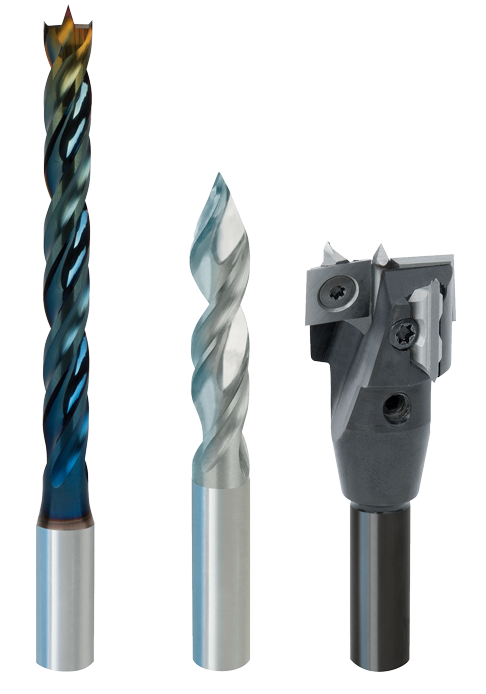Drills / Quick-Change Adaptors for Drills

Qualität, Auswahlkriterien und Expertentipps für optimale Bohrwerkzeuge in der Holzverarbeitung
A solid understanding of drilling tools plays a crucial role in the woodworking industry. The choice of the appropriate drill directly influences the quality of the work processes. Especially in the context of drilling wood-based materials, questions often arise about the optimal choice of tool and the potential increase in result quality. Thanks to many years of expertise in tool manufacturing and the resulting know-how, Jakob Schmid GmbH & Co. KG has many years of specialist knowledge about important factors that must be taken into account when purchasing drilling tools.
The choice of the right tool, given the growing supply of inferior alternatives, is of enormous importance, as it comes with various risks. Quality drills may be more expensive, but they offer significant advantages over inferior products. The overall cost effectiveness of a tool should always be considered.
The workmanship of the tool is a first indication of quality. Drills for dowel or through holes often have a carbide head on a steel base body. A very good solder joint is critical to prevent delamination. Uneven pits along the transition between the rod and the head can be seen and indicate poor brazing.
Precise alignment of the chip chambers in the head and bar is critical to avoid overheating and inefficient drilling. Maintaining tight tolerances on the diameter of the shank and the clamping surface is also important for the accuracy of the hole. The grinding quality of the cutting edge directly affects the machining result. With coated drills, the cutting edge is not visible, but with solid carbide or tipped drills, the quality can be recognized by the grinding pattern.
Drills with indexable inserts can be used longer due to the possibility of replacing the cutting inserts. Drills with precisely machined insert seats offer high machining quality here.
Another important factor is the geometry of the cutting edges and the spurs, which influence the hole edge. Premium drills are also machined with special grinding edges that ensure longer tool life. The coating on the drill head improves chip removal. Quality drills have a Teflon coating, whereas inferior drills are often uncoated. The labeling on the shank provides important information about the drill bit. These are not standardized, but are common on quality tools.
For extreme applications, diamond-tipped drills are recommended, which are more expensive but more durable. When buying these, it is advisable to rely on established manufacturers and specialist dealers for quality and advice.
Choosing a high-quality drilling tool can significantly improve work quality and efficiency. Quality features summarized below ensure making the best choice when buying a tool.
Quality drills have a clean and uniform braze between the steel base body and carbide head. Poor brazing can lead to delamination, which affects drilling performance.
The chip chamber in the head of the drill must be exactly aligned with that in the shank. Uneven chip chambers can lead to overheating and inefficient drilling. Recognizably good quality are smooth surfaces in the chip chambers.
Tightest tolerances on the shank diameter and the clamping surfaces are crucial for precise drilling. Clean grinding patterns on the shank indicate careful workmanship.
The cutting edge should be sharp and precise. For solid carbide or tipped drills, the grinding pattern on the carbide cutting edge provides information about the quality. Rough scoring indicates inferior quality.
The spurs determine the hole edge quality. Quality drills have pre-cutters with negative grinding. Premium drills also have a special round shape for longer tool life.
High-quality drills are coated with a thin Teflon coating, which allows the chips to slide off better. Inferior drills often have no coating or only a color coating, which can lead to sticking.
Quality drills are often labeled in detail with diameter, drilling depth, direction of rotation and cutting material group. Make sure that this information is available.
Depending on the application, there are different types of drills.
Established manufacturers and trustworthy specialist dealers offer customer-oriented quality as well as sound advice and service.
